

How to purchase a second-hand/resale private condominium in Singapore? This article will introduce you to the relevant processes and precautions.
1. Financial Planning
2. House Hunting and Viewing
3. Price Negotiation
4. Obtaining the OTP
5. Hiring a Lawyer
6. Exercising the OTP
7. Paying Stamp Duty
8. Completing the Transaction
9. Property Inspection
1. Financial Planning
If you plan to buy the house in full, simply prepare the corresponding funds. If you are buying a house with a loan, you need to clarify the maximum mortgage loan amount you can get. Apply to the bank for an IPA (In-Principle Approval) from the bank. The bank will determine a loan amount according to each individual's circumstances (such as income, age, credit record, etc.), which means the bank agrees in principle to provide the homebuyer with a specific loan amount.
Currently, the maximum mortgage loan ratio in Singapore is 75% of the total property price. This means that you need to determine the upper limit of your home-buying budget based on the IPA amount. Meanwhile, prepare at least 25% down payment.
In addition to the property price, you also need to consider the following costs:
BSD - Buyer's Stamp Duty
BSD is a mandatory tax when you buy a property located in Singapore. BSD is computed based on the higher of the property price and the market value, using a progressive tax rate applied, and the total tax payable is the sum of the taxes across the applicable brackets.
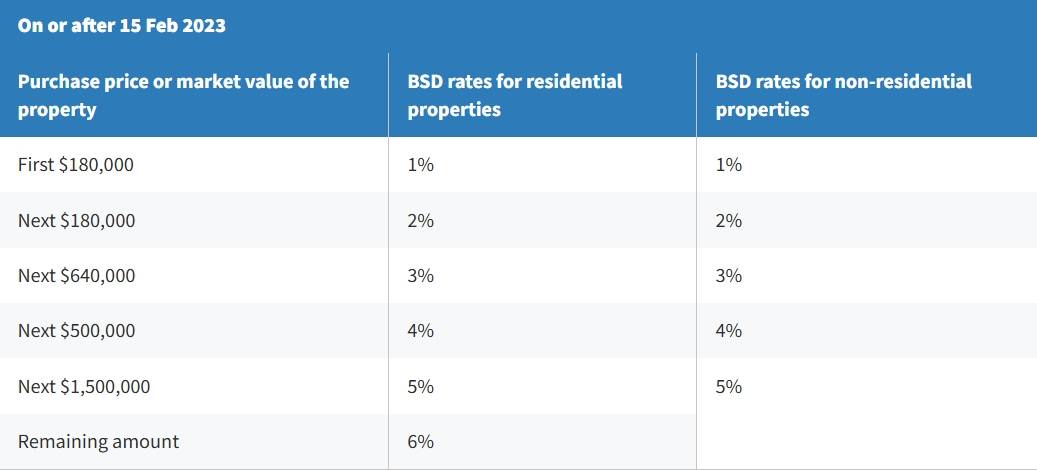
ABSD - Additional Buyer's Stamp Duty
Whether ABSD needs to be paid and the amount payable depends on factors such as the buyer’s residential status and the number of residential properties already owned by the Buyer.
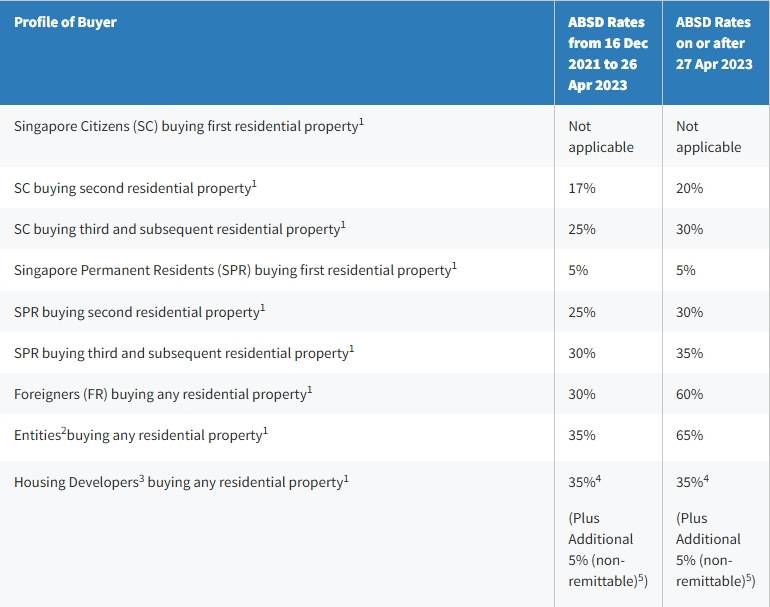
Legal Fee
A lawyer needs to be appointed during the transaction process to assist in ensuring that the transaction is legal and compliant as well as to safeguard your rights and interests. The fee is generally around $2,000 - $5,000.
Valuation fee
This is the fee charged by the appraiser to assess the property’s value. If you are buying the property with a loan, it is usually subsidized by the bank and does not need to be paid by you. However, if you are buying the property in full, you need to pay this fee yourself, which is approximately $300 - $400.
Agent Fee
It is generally paid by the seller, so the buyer does not need to pay it.
For more details about the expenses related to purchasing second-hand condominiums, you can refer to the article‘’What are the fees involved in buying a second-hand property in Singapore?” on the HouseBell platform.
2. House Hunting and Viewing
Go to reputable real estate platforms and filter properties that meet your needs and preferences according to factors such as budget, geographical location, and house size. For example, on the HouseBell platform, all the property listings are authentic and reliable. You can also customize search filters across multiple dimensions, and it also supports video/VR property viewing, helping you find your desired properties conveniently and efficiently.
Once you have shortlisted some properties of interested in, arrange for on-site visits to assess the actual condition of the houses, the community, and the surrounding environment of the communities.
If you have limited time and energy, consider contacting the certified agents on the platform. They will provide you with professional services and assist you in the whole process of house hunting, viewing, and handling subsequent procedures. The agency fee for the buyer's agent is usually shared with the seller's agent through negotiation (paid by the seller). That is to say, the buyer doesn't need to pay an additional agency fee, this saves money, effort, and worry. So, why not take advantage of it?
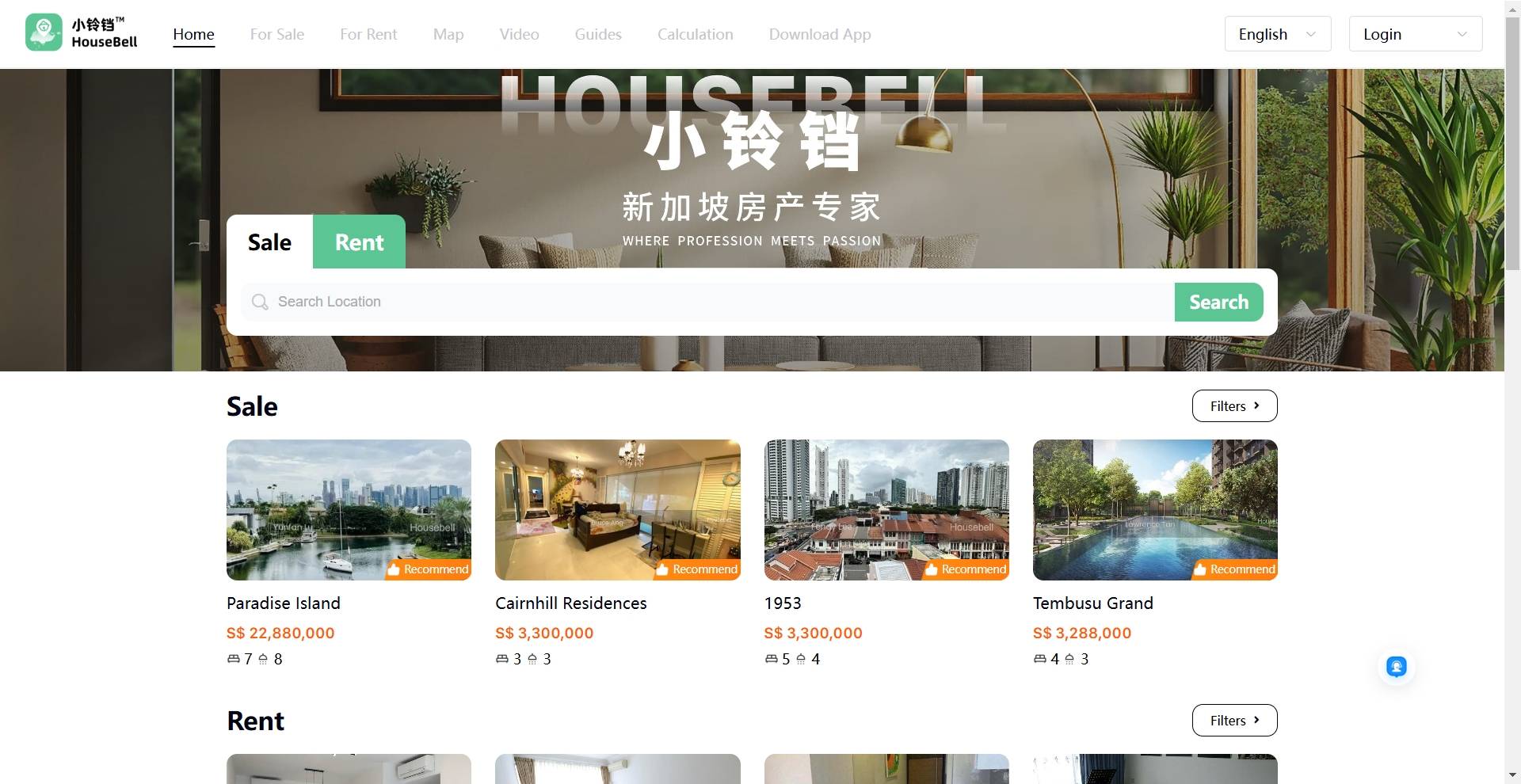
3. Price Negotiation
Conduct market research, check the recent transaction records of the community, and understand the current market trends. If you find a satisfactory property that meets your satisfaction and the price is within a reasonable and acceptable range, you can contact the seller's agent to make an offer. Negotiate with the seller to achieve the best possible price.
It is important to check whether the property is currently under a lease. A lease takes precedence over the sale and purchase agreement. If the property is still within the lease term at the time of ownership transfer, the new owner must wait until the lease to end before moving into the property.
4. Obtaining the OTP
After reaching an agreement with the seller, the buyer pays a 1% option fee to the seller. The seller then issues the Option to Purchase (OTP) and Inventory list (if the buyer requires the seller to leave the furniture). This document serves as the legal agreement between the buyer and the seller regarding the purchase of the property, signifying that both parties have reached a mutual agreement. The conditions for purchasing the property need to be clearly stated in the OTP, and the subsequent transfer of ownership and transaction will be based on it.
The validity period of the OTP is usually 14 days or for another duration mutually agreed upon by both parties. During this period, the buyer can cancel the purchase; however, and the 1% option fee will be forfeited by the seller. The OTP will become invalid in such cases, and the property can continue to be relisted for sale. On the other hand, the seller is not allowed to back out of the agreement or refuse to sell during the validity period of the OTP, nor can they issue an OTP to other buyers.
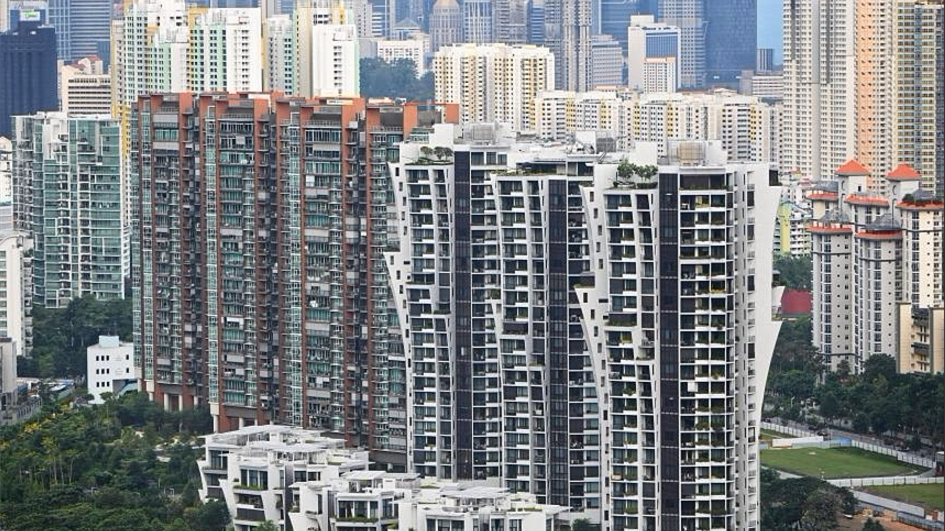
5. Hiring a Lawyer
After obtaining the OTP, you need a lawyer to assist with the subsequent processes. If you plan to use the Central Provident Fund (CPF) and/or a housing loan, you can entrust the lawyer to manage these on your behalf.
6. Exercising the OTP
Within 2 weeks after obtaining the OTP, you must exercise the OTP and pay 4% of the property price. The payment method is by cashier's order. This process must be completed by the lawyer who will submit the cashier's order should be submitted to the seller's lawyer. To avoid delay, it is recommended that you hand over the cashier's order to your lawyer at least 1 day in advance when exercising the OTP.
If you want to withdraw from the purchase, you must inform the seller in writing that you will no longer proceed with the property purchase. Alternatively, you can also let the OTP expire naturally, but the seller will not refund the 1% option fee you have already paid.
7. Paying Stamp Duty
Within 2 weeks after exercising the OTP, you can pay the stamp duty through your lawyer (as previously explained before). Failure to pay on time, you will result in penalties.
8. Completing the Transaction
After exercising the OTP, there is generally an 8 - 10-week completion period for the lawyer to finalize the remaining property ownership transfer procedures. On the completion date, the buyer needs to pay the remaining 95% balance (if there is a bank loan and CPF are involved, 75% of the payment will be paid by the bank loan, and the remaining 20% needs to be paid by the buyer with CPF and/or cash). Meanwhile, the lawyer will review the payment status of property management fees, property taxes, etc., to clarify the rights and responsibilities of both parties.
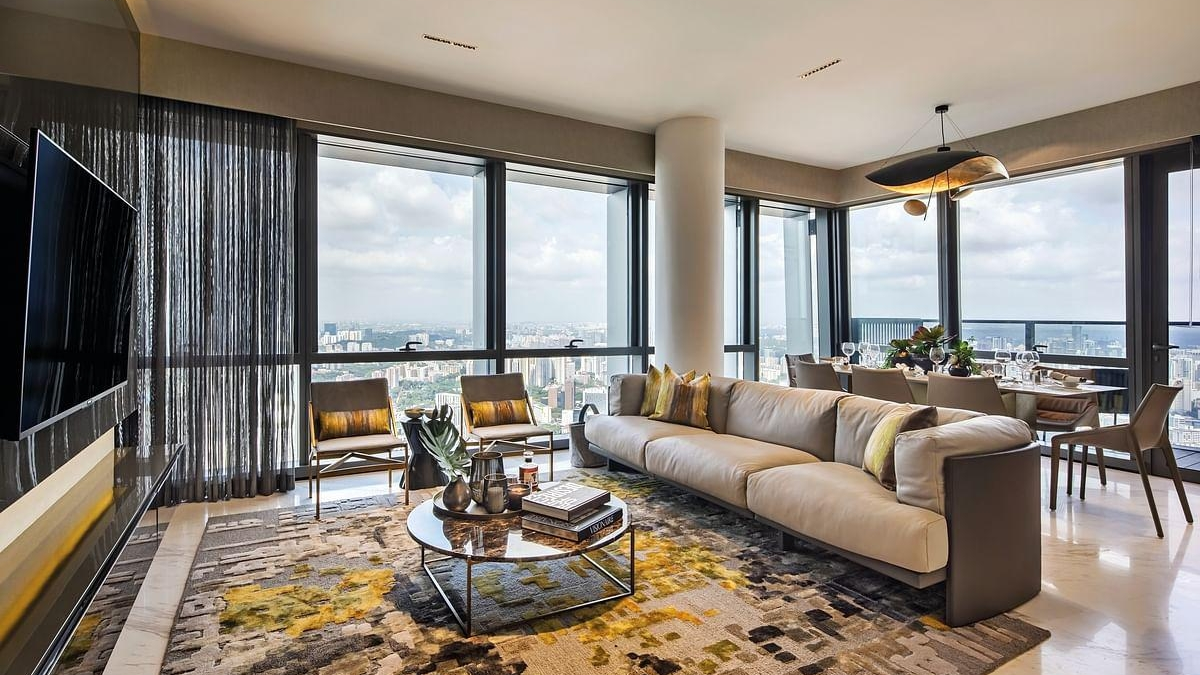
9. Property Inspection
After property ownership transfer procedures are finished, conduct the property handover with the seller. Make arrangements in advance to update the name on water, electricity, gas, and property accounts. Complete the handover of keys, access cards, and notify the property management. Once these processes are complete, congratulations, you are now the new owner of the house!
Please note that buying a second-hand house is different from purchasing a new house, which means you cannot ask the seller to be responsible for repairing defects afterwards. Unless the corresponding content is stated in the OTP, after the property ownership is transferred, any defects that occur in the house are the responsibility of the new owner, and you cannot claim compensation from the previous owner. Therefore, when issuing the OTP, the buyer must carefully inspect and be fully aware about the condition of the house, understand and agree to "sell as-is" (which means the selling price of the house is based on its current condition, not after renovation), so that disputes are less likely to arise.